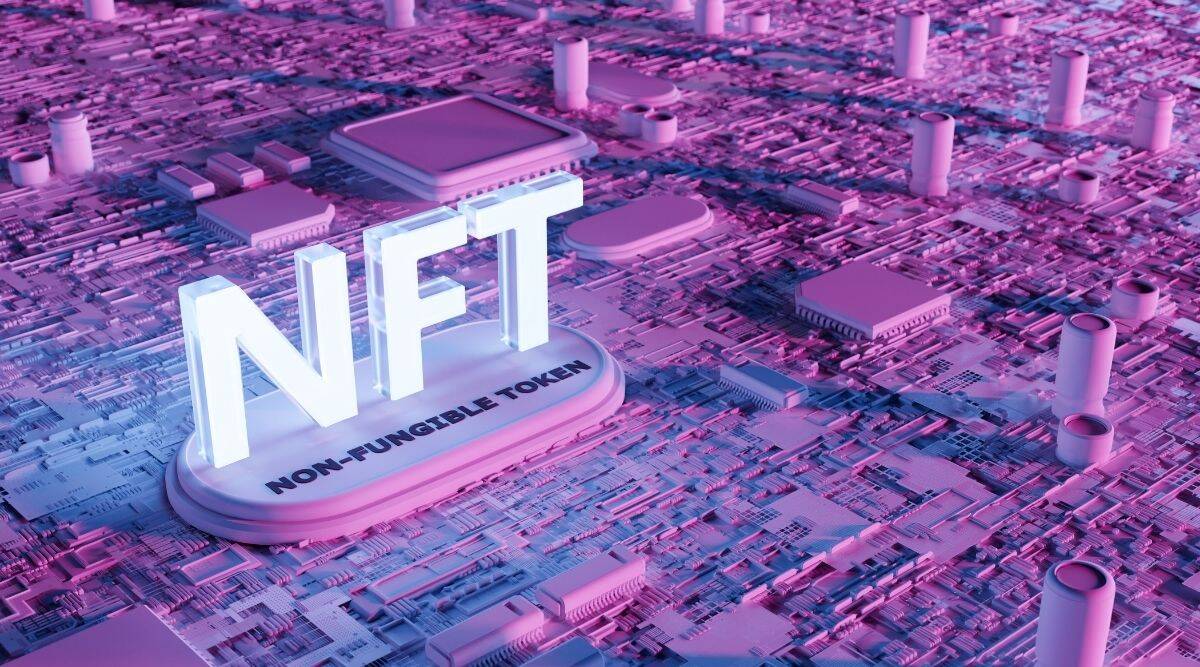The world of non-fungible-tokens (NFTs) has plunged after the initial hype that followed their rise in popularity. Many NFTs fell sharply in value, prompting some to question their long-term viability. This was due to a combination of factors, but primarily because of the sell-off in digital assets in the last three months.
On the world’s largest NFT marketplace OpenSea, trading volume has dropped to 99 per cent in four months between May and August 2022 according to DappRadar analytics platform. For context, NFT is a new type of blockchain-based asset that is unique and cannot be duplicated. Think of it like a baseball card, or a signed jersey – something that’s one-of-a-kind, rather than something you could mass produce. That makes NFTs basically virtual assets that can be used as collateral or stand-alone tokens. That being said, there have been some major concerns over whether this technology is ready for prime time. There are valid questions about how broadly adopted NFTs will become, and whether we’re just seeing the beginning of this trend or if it’ll fizzle out soon. Today, we discuss five primary reasons why the NFT market has crashed so hard.
There are a lot of sketchy projects in the blockchain space, but the NFT market is particularly rife with scams. A large portion of the NFT market is made up of shady creators selling simple assets on marketplaces. This was a ripe opportunity for scammers given the relative ease of setting up a website and selling fake pieces of art or sports memorabilia. And the market is responding accordingly. The tepid response to shady practices in the NFT market is one of the primary reasons why prices crashed so hard. The market is simply not taking off, and people are not engaging with these basic marketplaces.
The global crypto-market has shrunk from $1.02 trillion to $970.03 billion, a 15 per cent decrease since January 2022, according to CoinMarket cap. All major cryptocurrencies have been trading in the red lately, with the fall testing even long-term investors. The price of Ethereum plunged to more than 50 per cent, this had a direct affect on the floor price of NFTs too.
The massive spike in the NFT market was driven by FOMO (fear of missing out), but now that prices have declined significantly, investors are worried about making a shaky investment. As companies are simply selling basic digital assets, this has caused investors to lose interest in the NFT market. This is exacerbated by the fact that many of these low-value items are sitting in centralized marketplaces, which creates a lot of uncertainty among investors.
The main appeal of NFTs is that they have real-world value. Whatever is sold on a marketplace can be re-sold again later. While this works great for things like digital art, it’s not very useful for digital assets like clothing or sneakers. Sure, you can sell someone a pair of shoes, but what can you do with that pair of shoes? You can’t wear them, and it’s not like you can resell them again later. There’s no clear use cases for NFTs in the real world, which makes it difficult to see how these items will ever be worth anything. This is why nearly all of the popular NFTs are digital art. It’s the only thing that makes sense in the real world. And while centralized marketplaces can help increase the value of NFTs, they simply aren’t going to be worth much if the underlying blockchain project fails.
There is a lot of hype in the blockchain space, and it seems like every new project is going to change the world. But the truth is that only few of blockchain projects are successful, and the rest fail. Centralized marketplace are middlemen that take a cut of every digital asset sale. What’s more, they charge hefty listing fees, and they don’t guarantee that they won’t sell you a fake item. So even with the success of centralized marketplaces, NFTs still face the same problems that Initial Coin Offerings (ICOs) face. Centralized marketplaces help increase the value of digital assets, but they can also screw investors over. The only difference is that ICOs promise to build blockchain projects, while centralized marketplaces are simply middlemen taking a cut out of every sale.
The NFT market is crashing and will likely stay depressed for some time. For investors, the crypto markets are very volatile, and there’s no telling when the next bull run will come along. Once prices go back up, the NFT market might be the next hot investment.
India keen to strengthen partnership with Russia on Arctic subjects: PM Modi

